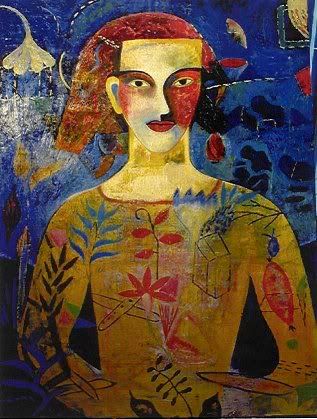ABRACADABRA ABRASAX
 NAME: Abrasax, more widely known as Abraxas, this however is due to early writers confusing the Latin Sigma & Xi in the name, also known as Abraxax and other permutations.
NAME: Abrasax, more widely known as Abraxas, this however is due to early writers confusing the Latin Sigma & Xi in the name, also known as Abraxax and other permutations.SYMBOLS & iMAGES: Chariot whip, Shield. The number 365 representing both the days of the year and emanations / virtues / gods for each day of the year, and a solar circle. Many different versions Abrasax can be found such as a man with the head of a lion and scorpions for feet, a human torso with the head of a rooster and serpents for legs, a cross between a two-legged dragon and serpent with the head of a cockerel, a short, pot bellied, long nosed demon wearing a crown, a great king with the feet of a dragon, a cloud of light, and a white red horse.
HOLY DAYS: Since when you add the numerical equivalents of the Greek letters of his name together you get 365, we have to assume that everyday was a holy day for this god.
SYNODEITIES: Yahweh, Y.V.H.V., Jehovah (Hebrew), Belenus (Celtic), Janus (Roman,)
DETAILS: Trying to figure out just who Abrasax was, at any given time in the past. is like looking at an unevenly cut diamond under a too bright light, though a kaleidoscope with a cracked smoked lens.
That is to say opinions vary!
Each individual who has written about him, be it Basilides, Homer, Simon Magnus, the unknown author of the Gnostic Revelations of Adam, or Carl Jung has their own take on Abrasax.
Basilides gives this name as a stand-in for the name of the Supreme Being, while Homer identifies him as one of the horses of the god Helios, meanwhile in another county we see him referred to in some Gnostic works as one of three "clouds of light from the Great Eternal Realms" who sometimes descend to take living mortals to those realms.
Of the few things that are agreed on by more than just one source, is the idea that Abrasax is a powerful being, who though the source of the 365 emanations / virtues / gods / heavens that make up the days of the year, and while the holds the symbols of virtue & power, he also has a dangerous temper.
Add to all this the Abraxas stones, undecipherable amulets found in museums the world over, (the different ones of which I personally suspect represent one of those 365 virtues/gods above,) and the contention that the word abracadabra comes from his name and I think you have evidence that whatever his origin was, at one time he was a prominent and powerful one.
Or was he?
If, as some writers say, Abrasax was the nexus point of opposites such as good / evil, light / darkness, lies / truthfulness, then might it be that what he was at the very, very beginning of his very checkered career was yet another version of the Trickster god, notorious boundary crosser and endless sewer of confusion, consternation, and wild stories?
It might explain a lot.
ABRACADABRA
The earliest historical mention of abracadabra appears in the writings of the 2nd Century Gnostic healer Quintus Serenus Sammonicus, who said it cured fevers and agues when inscribed properly on a piece of paper folded in the form of a cross and worn as an amulet.
The inscription should be triangular with each repetition of the word abridged by one letter per line, like this, but spaced to form an equilateral triangle:
ABRACADABR
ABRACADAB
ABRACADA
ABRACAD
ABRACA
ABRAC
ABRA
ABR
AB
A
According to Gnostic lore, it is a formula equivalent to ABRAXAS.
S.A. Mackey, in an 1824 treatise on astrological symbolism, says that it means "The Bull, the only Bull", ab'r-achad-ab'ra. This is probably nothing more than speculation, though.
The word was probably of Greek origin and spelled abrasadabra, the Greek "s" being confused with the English "c". Since the Greek version of ABRAXAS is ABRASAX, this makes a little sense.


0 Comments:
Post a Comment
<< Home